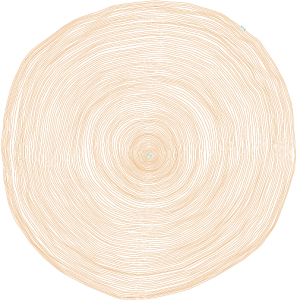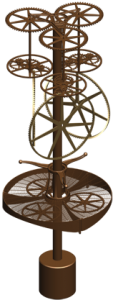
Recently The Guardian reported that Margaret Atwood has been selected to write a story that won’t be seen for a century. This (eventually) forthcoming piece has been commissioned as the first work of the Future Library Project, a new undertaking by Berlin-based artist Katie Paterson.
The concept is this: First, a forest of one thousand trees was planted just outside of the city of Oslo. From now on, the project will select one important writer every year to contribute a piece to be held in trust until 2114 – a century after the start of the project. On the 100-year anniversary of the project’s beginning, the trees that were planted this year will be cut down, and a book of one hundred years’ worth of unpublished texts will be made from their wood. At that point, and only then, the accumulated works of a century’s worth of authors will be released to the world.
Paterson is collaborating with the New Deichmanske Public Library in Oslo to host this art project through the ages. The library, opening in 2018, will contain a specially designed room dedicated to the project. It will be lined with wood from the newly planted forest, and it will contain the sealed works of each selected author. Every year, a new title will be added to the room. Library patrons will be able to peruse the works’ titles and the names of their authors, but nothing more. From this limited but evocative information, patrons will be encouraged to imagine and speculate on what the sealed texts could contain.
The Future Library Project can be seen as part of a tradition of large-scale longitudinal artworks – works that take place over the course of a long span of time. In 1987, John Cage, avant-garde musical theorist and pioneer of early electronic music, published a musical piece for organ titled “Organ²/ASLSP (As SLow aS Possible)”. The desired tempo of the piece, as one could infer from the title, should be as slow as one could possibly play it. In 2001, the Sankt Burchardi Church in Halberstadt began a performance of this piece that is scheduled to continue until the year 2640.

Other works of this nature have been produced by the San Francisco non-profit group The Long Now Foundation. The Foundation, in collaboration with artists, musicians, and scientists of such notoriety as Brian Eno and Stewart Brand, produces works of art and science dedicated to “creatively foster[ing] long-term thinking and responsibility in the framework of the next 10,000 years.” Among other things, they are working on a clock that will last for 10,000 years, a genomic conservation group dedicated to reviving extinct species, and a betting arena where patrons can stake philanthropic money on various long-term societal predictions.
Works of this nature lend themselves easily to a symbiotic relationship with libraries. The Long Now also runs explicitly library- and archive-based projects dedicated to ensuring continuity of outdated digital systems, preserving all human languages past and present, and more. What began as a longitudinal art project has gradually morphed into a fount of information science research. Meanwhile, the partnership between the aforementioned Future Library Project and the New Deichmanske Public Library will drive traffic to the library and engage patrons in thinking about their futures and the future of their culture. Encouraging society to think more in the long-term can help librarians and archivists to promote public awareness and appreciation of their services. Longitudinal art projects can represent the abstract work of archivists and other information professionals in a way that is eye-catching and immediately accessible to the public. When artists and information professionals work on the same thematic ground, they can dissolve the boundaries between their professions in fresh and surprising ways.
-For more information about the ways that artists and librarians can join forces, check out The Library as Incubator Project, a resource dedicated to promoting this kind of collaboration.
-To learn more about the Future Library Project, see this lovely video by its creator:
http://vimeo.com/97512418
(Post by Derek Murphy)
One thought on “Longitudinal Art and the Library”